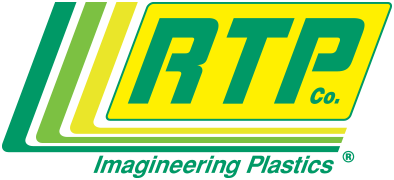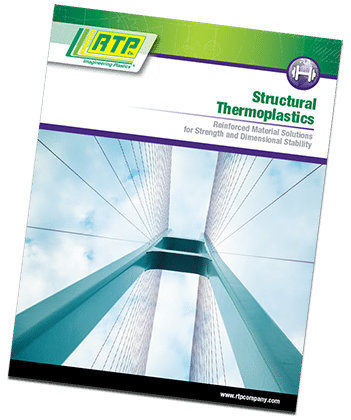Our Structural Products are thermoplastic materials that provide a specific combination of physical, mechanical, visual, and protective properties. Our Product Development Engineers carefully balance these properties when formulating a thermoplastic solution, first by selecting a proper resin system to meet the physical requirements, and then tailoring the additive technologies to achieve the necessary mechanical, visual, and protective characteristics.
We can make a recommendation from our extensive database of active, commercially available materials or formulate a custom thermoplastic compound to fit your application needs precisely.
We offer unbiased information to help you:
Determining Structural Properties
We can formulate a Structural and Reinforced Compound to provide any combination of the following traits:
Physical
- Chemical Resistance
- Heat Profile
- Warp Reduction
- Flow Profile
- Density
Mechanical
- Strength
- Stiffness
- Toughness – Impact Strength
Visual
- Color
- Surface Appearance
Protective
- UV Protection
- Regulatory Compliance
- Heat Stability
- Hydrolytic Stability
Determine Additional Properties
Meet Regulations
Our engineers can recommend or formulate a material for your application that strikes the right balance between meeting regulatory requirements and maintaining strength, stiffness, and overall toughness. Common regulatory requirements include applications with potable water or food contact, medical devices that are tested for biocompatibility, or electrical/electronics housings which require UL listings.
For example, in addition to having many compounds that are already recognized by UL, we participate in UL’s Client Test Data Program which allows testing conducted by RTP Company to be accepted directly by UL. This procedure can expedite UL certification of new materials. Applications like appliances and consumer goods that require a UL Horizontal Burn (HB) flame rating (sometimes with improved heat aging performance via the Relative Thermal Index rating) benefit greatly. We can work within a set of commonly used raw material combinations to offer customized solutions that can get the necessary HB and elevated RTI ratings quickly, thereby speeding time to market.
Predicting Part Performance
For more information, please visit our CAE services page or ask our engineers.
For more information about specific structural and reinforced compounds, select from the menu below:
Impact Modified (IM) Compounds from RTP Company provide increased impact resistance at all temperatures when compared to unfilled compounds. This technology can also be used in tandem with other structural fillers to increase ductility in compounds that also need to retain their strength and stiffness.
Some advantages of IM Compounds are:
- Improved impact resistance
- Improved ductility
- Increased low temperature impact performance
Our IM Compounds are used in a large array of markets including sporting goods, industrial, outdoor recreation vehicles, automotive, consumer goods, and electronics.
- Dimensional stability
- Stiffness
- Cost effectiveness
Mineral Filled Compounds may be used in high volume, low cost applications such as appliances, automotive, and packaging. Conversely, they may be used to reduce costs of more expensive polymers.
- Tensile and flexural strength and stiffness
- Short-term temperature (HDT) performance
- Long-term creep resistance
Short Glass Fiber Compounds are available in both commodity and engineering resin systems and are widely used by many markets, including automotive, healthcare, consumer goods and more.
Some advantages that our LT Series Compounds have over GF Compounds are:
- Up to 10% weight reduction while maintaining similar mechanical properties
- No chemical foaming agents
- Aesthetic parts still achievable vs. chemical foaming
Unlike chemical foaming agents, this technology is not dependent on wall thickness and can often be used as a drop-in solution with existing SG Compound tooling.
These compounds are best used as lightweight alternatives when the goal is to minimize energy consumption or the amount of human effort required to use the part.
Our Enhanced Performance compounds include the eXtra Performance (XP) Series and Ultra Performance (UP) Compounds.
The eXtra Performance (XP) Series consists of glass fiber reinforced Polypropylene (GF PP) compounds that are formulated for a higher level of performance; they effectively serve as a bridge between standard Short Glass Fiber Compounds and Very Long Fiber (VLF) Compounds, with benefits such as:
- Increased modulus and impact performance than standard GF PP Compounds
- High strength and stiffness, similar to VLF Compounds
- More cost effective than VLF Compounds
Other additive technologies may be incorporated to create robust compounds that are engineered to meet extremely demanding requirements such as heat aging, impact performance, flame retardance, ultra violet protection, or compliance with government agency approvals.
XP Compounds are easily injection molded and available worldwide, making them perfect for any industrial application that may require lightweight performance. Some of the markets that benefit from XP Compounds include automotive, industrial housing, and consumer goods.
View alternative languages of this innovation bulletin:
Chinese | French | German | Portuguese | Spanish
Ultra Performance (UP) Compounds are reinforced high temperature polymers that bring similar enhancements and offer a competitive alternative to aluminum, zinc, and magnesium die cast as well as thermoset composites. For more information on Ultra Performance Compounds, view our innovation bulletin:
Carbon Fiber Compounds provide benefits such as:
- Lower density than Glass Fiber Compounds and metals
- Highest strength and stiffness of all reinforced compounds
- Process-able on standard injection molding equipment
Our Carbon Fiber Compounds are globally available and can be used in the same base polymers as Glass Fiber Compounds. They can be loaded with up to 50% carbon fiber, offering solutions for many markets including aerospace, automotive, consumer, energy, and industrial.
High Gravity Compounds offer:
- the ability to control the center of gravity by adjusting mass
- an “expensive feel” by adding heft
- sound and vibration dampening
- resistance to chemicals and corrosion
Some common industries that benefit from High Gravity Compounds are cosmetics, sporting goods, military, automotive, and packaging.
Low Gravity Compounds are Gravity modified compounds designed to reduce the weight of parts of any geometry with achievable densities as low as 0.70 g/cm³ without the use of chemical foaming agents.
The advantages of our Low Gravity Compounds are:
- Up to 30% weight reduction
- Improved surface appearance vs. chemical foaming
- No concerns with wall thickness
Industries such as aerospace, automotive, consumer goods, and cosmetic packaging all benefit from Low Gravity Compounds from RTP Company.
RTP Company’s patented Controlled Geometry Pellets are small, shape-defined pellets that are used to improve your compression molding process, productivity, and performance.
Advantages of our CGP Compounds include:
- Improved mechanical properties vs. traditional powder blends
- Best packing of standard compression molding materials
- No blending steps or dust issues
For more details, view or download our innovation bulletin.
Our broad portfolio of structural products includes an extensive database of active, commercially available formulations and the expertise needed if a custom formulation is required. For more information, contact your local sales engineer!
Download a copy of our Structural brochure today!
Learn more about RTP Company’s structural products and how a specialty compound can provide you with an ideal solution.





